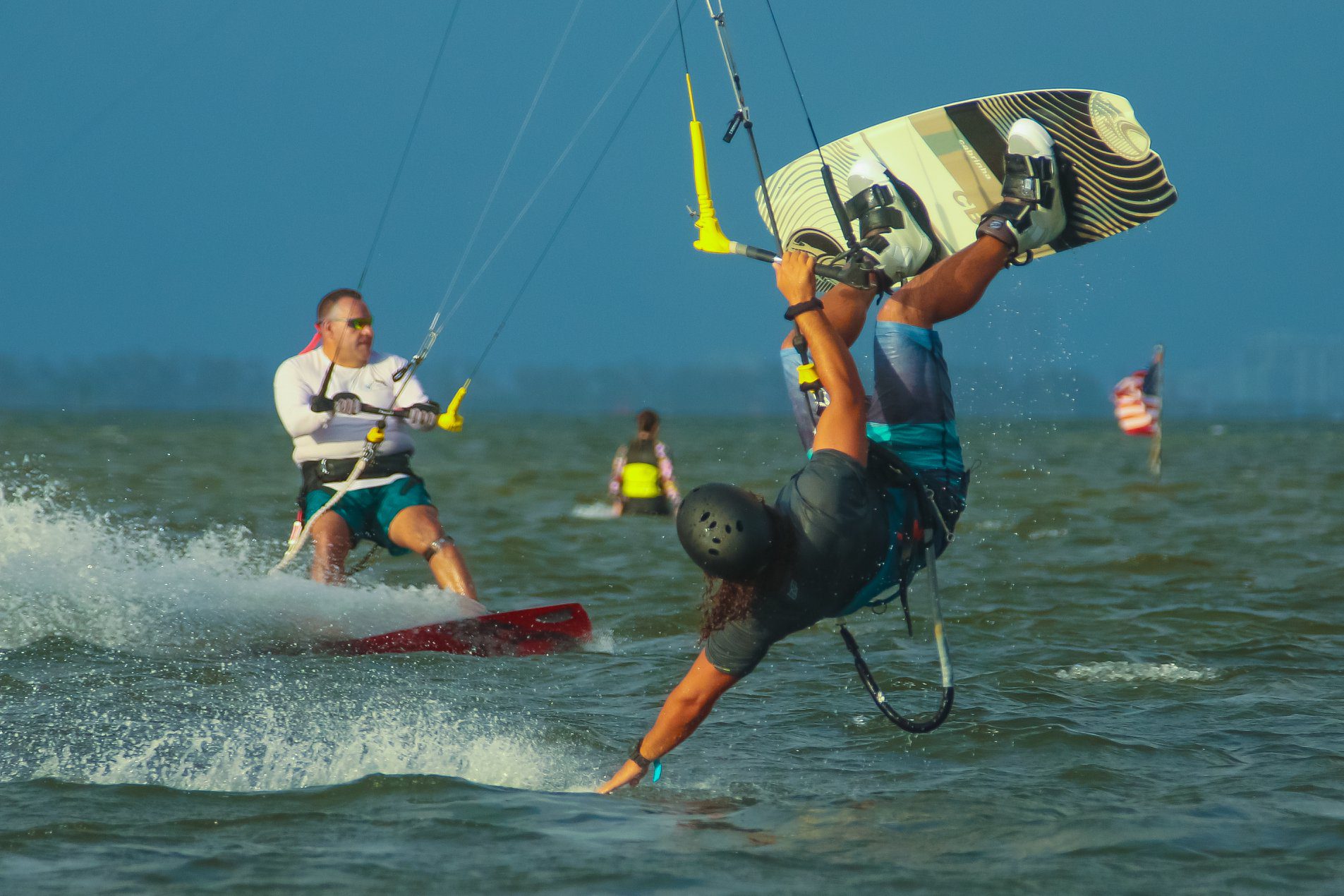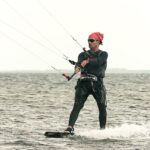
5 Types of Kiteboarding Transitions and How to Make Them.
Kitesurfing, or kiteboarding, is a thrilling sport involving riding the wind with a kite. It’s a fast-growing sport that requires a lot of skill and practice to master. One of the essential skills of kiteboarding is knowing how to make transitions. This blog post will look at five types of kiteboarding transitions and how to make them. Whether you’re a beginner or an experienced kiteboarder, this guide will give you an overview of the different types of kiteboarding transitions and how to do them correctly.
1) The art of the kiteboard transition.
Kiteboarding is an exciting and dynamic water sport that is growing in popularity around the world. It combines elements of surfing, wakeboarding, and windsurfing to create an adrenaline-filled experience. While the skill level of kiteboarders can range from beginner to advanced, one of the most impressive and challenging maneuvers they can pull off is a transition.
A transition is when the rider turns their board 180 or 360 degrees while still attached to the kite. This maneuver is a very advanced technique, as it requires the rider to be able to control their kite in the air while simultaneously performing a tricky surf-style trick. To transition successfully, the rider must be comfortable with their board and kite control.
Kiteboard transitions are thrilling to watch and allow riders to seamlessly transition from one direction to another without losing speed or momentum. Not only does this open up more possibilities for tricks, but it can also make it easier for riders to access different parts of the body of water they are riding on. With practice and skill, a kiteboarder can quickly achieve some spectacular transitions.
2) Top tips for making a kiteboard transition.
Transitioning between kitesurfing and kiteboarding is a vital skill to master. A successful transition depends on several critical factors, including body positioning, timing, and technique. Whether a beginner or an experienced kiteboarder, these tips will help you make smooth and stylish transitions.
1. Use your harness: Wearing a harness is essential for a successful transition. The harness will help keep your body in the correct position for maximum power and speed during the transition. It will also provide support when changing direction and performing jumps and tricks.
2. Use your kite: Your kite is essential for successfully transitioning. Make sure you know where your kite is and constantly adjust it accordingly during the transition. If transitioning from kitesurfing to kiteboarding, you may need to change your kite’s angle to ensure it’s in the correct position to give you enough lift and power.
3. Learn to ride a Twin Tip: Riding a Twin Tip board will make transitioning between kitesurfing and kiteboarding easier. Twin Tip boards are designed for both disciplines, so they’re ideal for transitioning between them.
4. Master your stance: Ensuring your body is in the correct posture during a transition is essential for successful growth. Ensure your weight is evenly distributed over the board and your knees are bent to help balance and control. This will ensure you have enough power and momentum for the transition.
5. Practice makes perfect: As with any skill, practice makes perfect when making successful transitions between kitesurfing and kiteboarding. Dedicate time each day to practicing changes until you feel comfortable and confident performing them in different conditions and with other-sized kites.
3) The three main types of kiteboard transitions.
1) Jump Transition: The jump transition is when you launch off the water and move your board around while airborne. This transition can be done in various ways and improves your aerial maneuvers.
2) Hover Transition: This type of transition requires you to keep your board hovering above the water, slowly moving the board around as you approach. This is a great way to practice control and balance when kiteboarding.
3) Slide Transition: The slide transition is when you slide your board across the water’s surface. This can be done with either the nose or tail of your board and is excellent for generating speed and making sharp turns while kiteboarding.
These three main types of kiteboard transitions will help you progress and improve your riding skills. It’s important to practice each change regularly and familiarize yourself with the movements and techniques needed to make them smooth and successful.
4) How to make a kiteboard transition.
Kiteboarding transitions can be an exciting and rewarding experience for any kiteboarder. The transition involves changing direction, altering speed, and switching from one kiteboard edge to another. Making a kiteboard transition requires skill, balance, and practice to succeed. Here are a few tips to help you make the perfect transition.
First, practice your stance and body position. Keep your arms, legs, and body aligned, and avoid twisting or rotating your body. This will help you maintain balance during the transition.
Next, focus on timing and weight distribution. It would help if you timed the transition ideally to ensure that your weight is evenly distributed on both edges of the board. When transitioning, shift your weight onto your back foot, pushing down on the kiteboard with your front foot. This will help you transition quickly and smoothly.
Finally, ensure that your kite is in the correct position. As you transition, ensure your kite is positioned in the proper direction. If you’re transitioning from a toe side to a heel side edge, the kite should be slightly higher than before. This will help you gain speed as you transition.
With these tips, you’ll be able to master the art of making a kiteboard transition! So get out there and start practicing!.
5) The benefits of kiteboarding transitions.
Kiteboarding transitions are a great way to progress your kiteboarding skills and take your riding to the next level. Transitions allow you to practice your freestyle and get used to performing multiple tricks efficiently while improving your overall control of the kite. You can use these transitions to link different types of maneuvers together, allowing you to create longer and more exciting combos.
Transitions also help improve your board control and understanding of the wind and water conditions, making you a better rider overall. With improved board control, you can become more aware of how your kite behaves in different winds and how to control the kite’s power better. This enhanced awareness of your kite’s behavior can help you stay safe on the water and react quickly to changing conditions.
Finally, transitions can provide an excellent way for beginners to get used to riding a kiteboard. By practicing fundamental changes, beginners can build confidence and familiarity with the equipment and begin to understand the forces involved with riding. As their skill level increases, they can move on to more complex transitions and experiment with different riding styles.
Kiteboarding transitions can be a fun and rewarding experience that can help you improve your skills and enjoy the sport even more! So why not give them a try?
Author
Latest entries
 WatersportsMay 10, 2023Qatar GKA Freestyle Kite World Cup, Fuwairit Kite Beach, Qatar: 31 January – 04 February – 2023
WatersportsMay 10, 2023Qatar GKA Freestyle Kite World Cup, Fuwairit Kite Beach, Qatar: 31 January – 04 February – 2023 WatersportsMarch 30, 2023Seven Navigation Tips That All Kite Surfers Should Know.
WatersportsMarch 30, 2023Seven Navigation Tips That All Kite Surfers Should Know. WatersportsMarch 30, 2023Why Safety First is the Most Important Aspect of Kitesurfing.
WatersportsMarch 30, 2023Why Safety First is the Most Important Aspect of Kitesurfing. WatersportsMarch 30, 2023Tips to Improve Your Body Drag Skills in Kitesurfing.
WatersportsMarch 30, 2023Tips to Improve Your Body Drag Skills in Kitesurfing.




